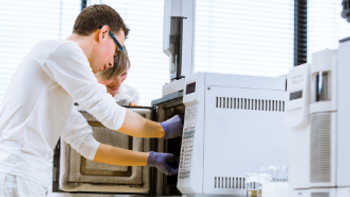
Screening for and Preventing Pathogens in Cannabis Crop Growth
In a presentation at the 2023 edition of the Cannabis Science Conference, Scott Churchill made two main recommendations for growers to head off the spread and invasiveness of pathogens.
While it is customary and necessary to test for things like mold, mildew, and E. coli in agricultural products, testing for all pathogens should be done to ensure a successful cannabis crop, according to Scott Churchill, vice president of scientific development for MCR Labs, based in Framingham, Massachusetts, USA (1).
Churchill spoke on the topics of screening and prevention in a lecture titled “Pathogens: Why, Where and How,” presented at the Cannabis Science Conference in Providence, Rhode Island, on September 21.
“A lot of pathogens can impact your plan that do not show up in a regulatory compliance test, or if they do, it’s going to be too late to get your full yield,” Churchill said in his presentation. “The only way that you can offset this to prevent this from happening to get a full crop yield is if you have a monitoring and management system that allows you, or you in combination with the laboratory, to identify them.”
A grower may not be able to assess pathogen-caused problems with their yield by sight, such as observing damping off or yellowing, or even weight, Churchill said, but those or other characteristics appearing as normal could mask a reduction in potency of the cannabis being cultivated. Worse yet, pathogen contamination can result in a change in genetics itself that might lead to the death of one or multiple strains of the plant, Churchill said.
The first line of defense is the cultivator, and Churchill went on to review the differing ways cultivators can best monitor pathogen exposure in and out of the lab, from the leaves down to the stems and roots. But moreover, he said, identification in the first place is key, because misdiagnosis as a lighting or watering problem could mean pathogens are still lying in wait in the soil, waiting to infect the next crop, whether it be cannabis or something else.
Two recommendations Churchill made for prevention were starting with what he called “clean stock” that ensures clones of unknown pathogenic content are not being introduced and running effective plants through multiple cycles of tissue culturing to strip out infections and return a specimen to its original genetics.
These concerns, he said, have become ever more magnified in the last decade as the cannabis market has become legalized and regulated for both medical and recreational use.
“When you translocate plants from different regions, that has to be done with extreme care, because if you bring a plant that’s infected to an area that doesn’t have any natural defense against it, it can run amok very quickly,” Churchill said. “You don’t want people smoking mold or being exposed to bacteria and so forth, but you also want to have a successful grow operation in a successful industry.”
Reference
(1) Churchill, S. Pathogen Testing: Why, Where and How. Presented at the Cannabis Science Conference, Providence, Rhode Island, September 21, 2023.
Newsletter
Join the global community of analytical scientists who trust LCGC for insights on the latest techniques, trends, and expert solutions in chromatography.




